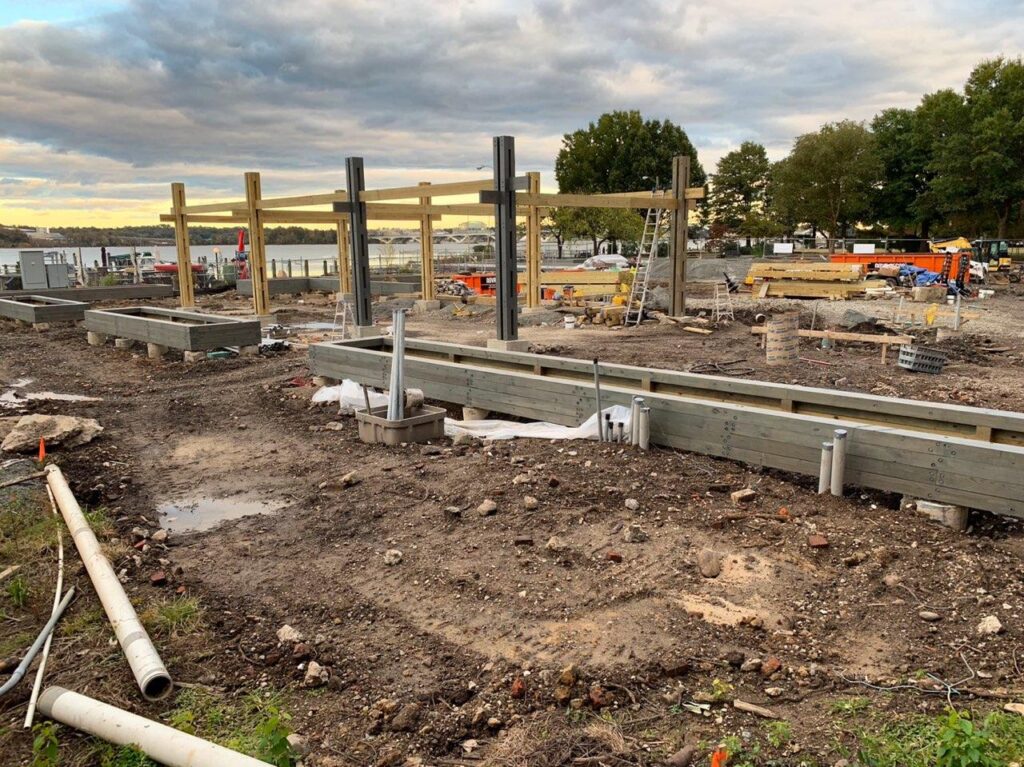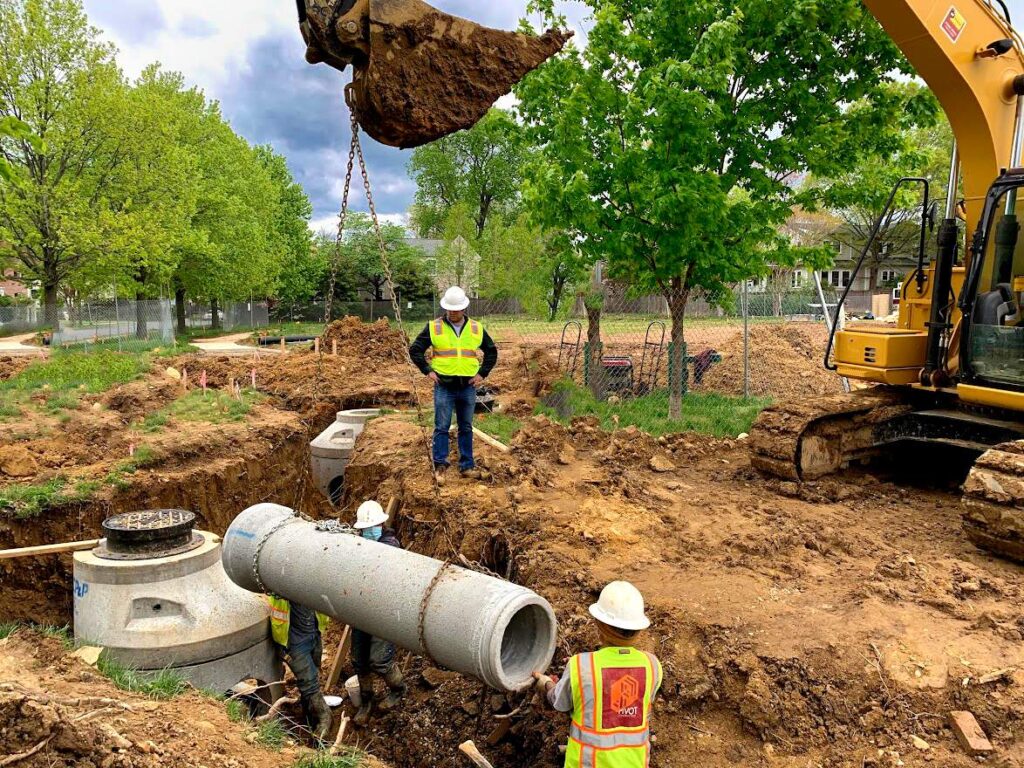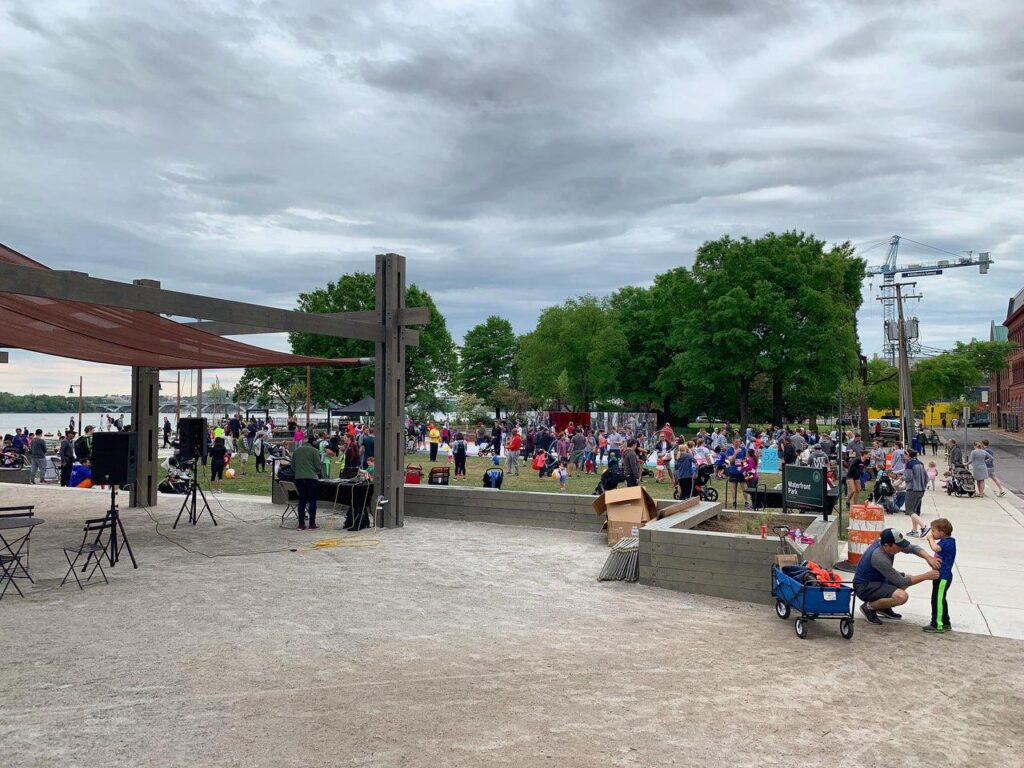Contents
- What makes sustainable construction essential for Bethesda’s parks?
- How does sustainable park construction benefit the Bethesda community?
- Which eco-friendly materials are best for Bethesda park construction?
- What renewable energy solutions work best in Bethesda parks?
- How can water conservation be integrated into Bethesda park design?
- What sustainable landscaping practices enhance Bethesda parks?
- Which local regulations govern sustainable park construction in Bethesda?
- How do sustainable parks improve public health in Bethesda?
- What funding options exist for sustainable park projects in Bethesda?
- How can existing Bethesda parks be retrofitted for sustainability?
- Which Bethesda parks showcase successful sustainable construction?
- How does climate resilience factor into Bethesda park construction?
- What maintenance practices keep Bethesda parks sustainably operating?
- How can community involvement enhance sustainable park projects in Bethesda?
Sustainable Construction for Parks in Bethesda represents a forward-thinking approach to creating green spaces that serve both community needs and environmental goals. These innovative projects combine cutting-edge design principles with ecological consciousness to develop parks that minimize environmental impact while maximizing recreational value.
By incorporating renewable materials, energy-efficient features, and water conservation systems, Bethesda’s park construction initiatives are setting new standards for urban green spaces. Local authorities, landscape architects, and community stakeholders collaborate closely to ensure these sustainable parks reflect Bethesda’s commitment to environmental stewardship while providing beautiful, functional spaces for residents and visitors.
These thoughtfully designed parks serve as models for sustainable urban development, demonstrating how recreational spaces can contribute positively to environmental health.
What makes sustainable construction essential for Bethesda’s parks?
Sustainable Construction for Parks in Bethesda addresses critical environmental challenges while creating resilient public spaces. The region’s growing population and urban development have increased pressure on natural resources, making eco-conscious construction approaches necessary rather than optional. Traditional park development often involves significant resource consumption, habitat disruption, and ongoing maintenance demands that strain municipal budgets.
Sustainable alternatives minimize these impacts while creating spaces better adapted to changing climate conditions. Bethesda’s proximity to sensitive watersheds, including the Potomac River ecosystem, means park construction directly affects regional water quality and habitat health. Additionally, Montgomery County’s ambitious climate goals require all public projects to demonstrate environmental leadership.
Sustainable parks serve as educational showcases, helping residents understand practical applications of green building principles. By prioritizing sustainable construction, Bethesda ensures its parks contribute to environmental solutions rather than exacerbating existing problems, creating a legacy of responsible stewardship for future generations.
How does sustainable park construction benefit the Bethesda community?
Sustainable Construction for Parks in Bethesda delivers multiple community benefits beyond environmental protection. These thoughtfully designed spaces significantly reduce operational costs through energy efficiency and decreased water consumption, allowing municipal funds to support additional community services. Sustainable parks typically feature improved air quality through strategic vegetation that filters pollutants, creating healthier environments for visitors of all ages.
These green spaces help mitigate the urban heat island effect, providing cooling refuge during increasingly hot summers. Property values near sustainably constructed parks generally increase by 8-20%, benefiting homeowners throughout surrounding neighborhoods. Local businesses experience increased foot traffic as these attractive destinations draw visitors. Sustainable parks often incorporate educational elements that raise environmental awareness among residents.
The construction process itself frequently prioritizes local materials and contractors, strengthening the regional economy. Perhaps most importantly, these parks foster community cohesion by creating inclusive gathering spaces where residents connect with nature and each other, strengthening Bethesda’s social fabric while demonstrating the community’s values regarding environmental responsibility.
Which eco-friendly materials are best for Bethesda park construction?
Sustainable Construction for Parks in Bethesda relies on carefully selected materials that minimize environmental impact while withstanding intensive public use. Recycled composite decking, manufactured from reclaimed plastic and wood fibers, provides durable, low-maintenance surfaces for walkways and seating areas without harmful chemical treatments. Permeable pavers allow stormwater infiltration while providing stable surfaces for high-traffic areas.
Locally sourced natural stone reduces transportation emissions while connecting aesthetically to the region’s geological character. Sustainably harvested timber certified by the Forest Stewardship Council ensures playground equipment and structures don’t contribute to deforestation. Recycled rubber surfacing creates safe play areas while diverting waste tires from landfills.
Rapidly renewable bamboo offers an alternative to hardwoods for architectural elements and furnishings. Reclaimed materials from demolished local structures provide historical continuity while reducing waste. For site furnishings, recycled plastic lumber resists weathering without requiring chemical preservatives. These material choices not only reduce environmental impact but often reduce lifecycle costs through improved durability and decreased maintenance requirements, making them fiscally responsible choices for Bethesda’s public spaces.
What renewable energy solutions work best in Bethesda parks?
Sustainable Construction for Parks in Bethesda increasingly incorporates renewable energy systems that reduce operational costs while demonstrating clean energy technologies. Solar-powered lighting fixtures eliminate the need for electrical trenching while providing reliable illumination for pathways and gathering areas. These self-contained units store energy during daylight hours and automatically activate at dusk, enhancing safety without ongoing electricity costs.
Solar pavilions with photovoltaic roofing generate electricity while providing shaded gathering spaces, sometimes feeding surplus power back to the grid. Small-scale wind turbines can be strategically placed in open areas where they capture prevailing winds while serving as educational demonstrations. Kinetic energy harvesters integrated into playground equipment convert children’s activity into power for ambient lighting or device charging stations.
Geothermal systems efficiently heat and cool park facilities by leveraging stable underground temperatures. Microhydro installations in parks with water features can generate modest power while adding visual interest. These renewable energy applications not only reduce carbon footprints but create engaging educational opportunities, helping visitors understand clean energy principles through direct experience with technologies that might otherwise seem abstract.
How can water conservation be integrated into Bethesda park design?
Sustainable Construction for Parks in Bethesda prioritizes comprehensive water management strategies that protect this precious resource. Rainwater harvesting systems capture precipitation from pavilion roofs and hard surfaces, storing it in underground cisterns for irrigation during dry periods. Bioswales and rain gardens strategically positioned throughout parks filter stormwater runoff while creating attractive landscape features with native plants adapted to periodic inundation.
Permeable surfacing for pathways, parking areas, and plazas allows water infiltration rather than contributing to runoff. Smart irrigation systems with soil moisture sensors ensure plants receive water only when needed, reducing consumption by 30-50% compared to conventional systems. Drought-resistant native plantings minimize supplemental watering requirements while supporting local wildlife.
Water-efficient fixtures in restrooms and drinking fountains prevent waste, while educational signage explains these conservation measures to visitors. Some Bethesda parks incorporate constructed wetlands that naturally filter water while creating valuable habitat. These integrated approaches not only conserve water but often reduce maintenance costs and create more resilient landscapes that better withstand both drought and heavy rainfall events, adapting to changing climate conditions.
What sustainable landscaping practices enhance Bethesda parks?
Sustainable Construction for Parks in Bethesda embraces ecological landscaping approaches that create beautiful, resilient environments requiring minimal resource inputs. Native plant communities form the foundation of these landscapes, selected for adaptation to local soil and climate conditions. These indigenous plantings support local pollinators and wildlife while requiring less water, fertilizer, and maintenance than exotic alternatives.
Strategic tree placement provides natural cooling through shade while sequestering carbon and improving air quality. Meadow areas replace resource-intensive lawns in appropriate locations, reducing mowing emissions and creating habitat diversity. Composting systems process landscape waste on-site, creating nutrient-rich soil amendments that eliminate the need for chemical fertilizers. Integrated pest management strategies minimize chemical interventions through biological controls and resistant plant varieties.
Mulching with recycled materials conserves soil moisture while suppressing weeds naturally. Vertical landscaping on walls and structures maximizes green space in compact areas. These sustainable landscaping practices create dynamic, seasonally changing environments that connect visitors with natural processes while demonstrating how beautiful landscapes can coexist with environmental responsibility, inspiring residents to adopt similar practices in their own gardens.
Which local regulations govern sustainable park construction in Bethesda?
Sustainable Construction for Parks in Bethesda navigates a comprehensive regulatory framework that increasingly promotes green building practices. Montgomery County’s Green Building Law establishes minimum sustainability standards for public facilities, including LEED certification requirements for park buildings exceeding certain square footage thresholds. The County’s MS4 permit mandates strict stormwater management practices that influence site design and material selection.
Bethesda’s location within the Chesapeake Bay watershed subjects development to additional water quality protections under the Maryland Department of Environment guidelines. The Montgomery County Forest Conservation Law requires preservation of existing tree canopy where possible and mitigation for necessary removals. Local zoning ordinances include sustainability incentives for projects incorporating green infrastructure. The County’s Green Streets policy influences circulation design within and around parks.
The Americans with Disabilities Act establishes accessibility requirements that must be integrated with sustainable design elements. Projects receiving certain funding may trigger additional sustainability requirements under state or federal grant conditions. Navigating these overlapping regulations requires experienced design teams familiar with local requirements, but this regulatory framework ultimately supports creating parks that align with Bethesda’s environmental values.
How do sustainable parks improve public health in Bethesda?
Sustainable Construction for Parks in Bethesda creates environments that actively promote community wellbeing through multiple pathways. These thoughtfully designed spaces encourage physical activity through accessible trails, fitness stations, and recreational facilities that appeal to diverse users, helping combat sedentary lifestyles. Native plantings improve air quality by filtering pollutants and producing oxygen, particularly beneficial for visitors with respiratory conditions.
Sustainable parks typically minimize chemical usage in maintenance, reducing exposure to potentially harmful substances. Natural elements like flowing water and varied vegetation create restorative environments that reduce stress and improve mental health, with research showing even brief nature exposure lowers cortisol levels and improves mood. Shaded areas protect visitors from harmful UV exposure while cooling microclimate effects make outdoor activity comfortable during hot weather.
Community garden spaces within sustainable parks promote nutrition education and access to fresh produce. Social interaction spaces foster community connections that combat isolation. Sustainable design elements like natural play areas encourage developmental benefits for children beyond what standard playground equipment provides. By integrating these health-promoting features, sustainable parks become vital public health infrastructure, offering preventative health benefits that reduce healthcare costs while improving quality of life for Bethesda residents.
What funding options exist for sustainable park projects in Bethesda?
Sustainable Construction for Parks in Bethesda accesses diverse funding streams that make ambitious green projects financially viable. Montgomery County’s Capital Improvements Program provides baseline funding for park development, with sustainability features increasingly prioritized in budget allocations. Maryland’s Program Open Space offers matching grants specifically supporting green infrastructure in public recreation areas.
Federal funding through the Land and Water Conservation Fund targets projects demonstrating environmental benefits. The Chesapeake Bay Trust provides grants for projects improving watershed health through sustainable design. Public-private partnerships allow corporations to support specific sustainable elements in exchange for recognition, creating win-win arrangements. Community foundations and local philanthropists frequently contribute to innovative park features aligned with environmental values.
Crowdfunding campaigns have successfully financed smaller sustainable components with strong community appeal. Energy-efficiency elements may qualify for utility rebate programs that reduce implementation costs. Green bonds represent an emerging financing mechanism for larger sustainable infrastructure investments. Creative approaches like stormwater credit trading can generate ongoing revenue streams for parks with exceptional water management features.
By combining multiple funding sources, Bethesda maximizes available resources for creating exemplary sustainable parks that might otherwise exceed traditional municipal budgets.
How can existing Bethesda parks be retrofitted for sustainability?
Sustainable Construction for Parks in Bethesda isn’t limited to new development—existing parks offer numerous retrofit opportunities that improve environmental performance. Irrigation system upgrades incorporating smart controllers and high-efficiency components can reduce water consumption by 30-50% without compromising landscape health. Replacing conventional lighting with LED fixtures dramatically cuts energy usage while reducing light pollution through better directionality.
Converting portions of resource-intensive turf to native meadows or gardens reduces maintenance emissions while creating habitat. Adding rain gardens and bioswales to manage stormwater improves watershed health while creating attractive landscape features. Solar installations on existing structures generate clean energy while demonstrating renewable technology.
Permeable surfacing can replace conventional paving during scheduled renovations, improving stormwater management. Composting programs divert organic waste from landfills while producing valuable soil amendments. Water bottle filling stations reduce single-use plastic waste. Educational signage explaining these retrofits raises awareness about sustainability practices.
These incremental improvements can transform conventional parks into environmental showcases over time, often with rapid returns on investment through reduced operational costs, making sustainability retrofits fiscally responsible approaches for improving Bethesda’s existing park infrastructure.
Which Bethesda parks showcase successful sustainable construction?
Sustainable Construction for Parks in Bethesda has produced several exemplary projects demonstrating green building principles. Cabin John Regional Park’s recent renovations incorporated extensive stormwater management features that protect the adjacent stream while creating educational wetland habitats. The award-winning Battery Lane Urban Park transformation replaced impervious surfaces with native plantings and permeable materials, dramatically improving its environmental performance while enhancing visitor experience.
Caroline Freeland Urban Park’s renovation showcases sustainable water management through artfully designed rain gardens that capture runoff from surrounding urban areas. Norwood Local Park features solar-powered facilities and lighting that significantly reduce operational costs. Little Falls Stream Valley Park demonstrates successful stream restoration techniques that improve water quality while creating resilient landscapes.
Elm Street Urban Park incorporates recycled materials throughout its construction, diverting substantial waste from landfills. These successful implementations serve as valuable case studies for future projects, providing real-world performance data and demonstrating how sustainable construction creates parks that are not only environmentally responsible but also more beautiful, functional, and beloved by community members. Each project builds upon lessons learned from previous efforts, continuously advancing sustainable park design practices in Bethesda.
How does climate resilience factor into Bethesda park construction?
Sustainable Construction for Parks in Bethesda increasingly prioritizes climate resilience strategies that help these vital public spaces withstand changing environmental conditions. Sophisticated stormwater management systems accommodate increasingly intense precipitation events, preventing erosion and flooding through detention basins, permeable surfaces, and vegetated swales. Heat-resistant plant selections ensure landscapes remain viable despite rising temperatures and extended drought periods.
Expanded tree canopies create cooling microclimates that remain comfortable during heat waves while sequestering carbon. Strategic grading directs water away from vulnerable infrastructure while creating natural retention areas. Renewable energy systems with battery storage provide operational resilience during power outages. Flexible-use spaces accommodate changing recreational needs as seasonal patterns shift. Drought-resistant soil amendments improve moisture retention during dry periods.
Modular construction approaches allow for easier adaptation as conditions change over time. These resilience measures protect substantial public investments while ensuring parks remain functional despite climate stresses. Beyond physical resilience, these adaptations create educational opportunities about climate challenges and solutions. By incorporating climate resilience into park construction, Bethesda creates public spaces designed not just for today’s conditions but for the anticipated challenges of coming decades.
What maintenance practices keep Bethesda parks sustainably operating?
Sustainable Construction for Parks in Bethesda establishes the foundation for environmentally responsible operations through thoughtful design, but ongoing maintenance practices determine long-term sustainability performance. Integrated pest management protocols minimize chemical applications by employing biological controls and accepting appropriate threshold levels of certain pests. Organic fertilization programs utilize compost and natural amendments rather than synthetic alternatives that can contaminate waterways.
Electric maintenance equipment reduces emissions and noise pollution compared to gas-powered alternatives. Selective mowing regimes maintain formal areas while allowing meadow sections to follow natural growth cycles, reducing fuel consumption while creating wildlife habitat. Water-efficient maintenance schedules align irrigation with natural rainfall patterns. Pruning practices prioritize plant health over rigid aesthetic standards, reducing green waste generation.
On-site composting converts landscape debris into valuable soil amendments, closing the nutrient loop. Staff training ensures maintenance personnel understand the ecological principles behind sustainable practices. Regular sustainability audits identify improvement opportunities in operational procedures. These maintenance approaches not only reduce environmental impact but often decrease long-term costs through reduced resource consumption and equipment wear, demonstrating that environmental responsibility aligns with fiscal prudence in park operations.
How can community involvement enhance sustainable park projects in Bethesda?
Sustainable Construction for Parks in Bethesda reaches its full potential when community members actively participate throughout the process. Early engagement through design charrettes and workshops ensures parks reflect local priorities while building support for sustainability features. Volunteer planting events transform installation of native landscapes into community celebrations while reducing labor costs.
Citizen science programs engage residents in monitoring wildlife, water quality, and plant health, providing valuable data while creating educational opportunities. Friends groups adopt specific maintenance responsibilities, extending the capacity of park staff. Community-based art installations using recycled materials add cultural dimensions to sustainability efforts. Educational programming led by local experts shares specialized knowledge about environmental topics.
School partnerships create outdoor classrooms where students participate in ecological restoration. Harvest festivals celebrate community garden productivity. These engagement strategies transform sustainable parks from municipal facilities into community treasures with dedicated supporters. Beyond improving specific parks, these involvement opportunities build environmental literacy and stewardship ethics that influence behavior throughout the community. The most successful sustainable parks in Bethesda demonstrate that meaningful community participation creates spaces that are not only environmentally responsible but also deeply loved and actively protected by those they serve.





